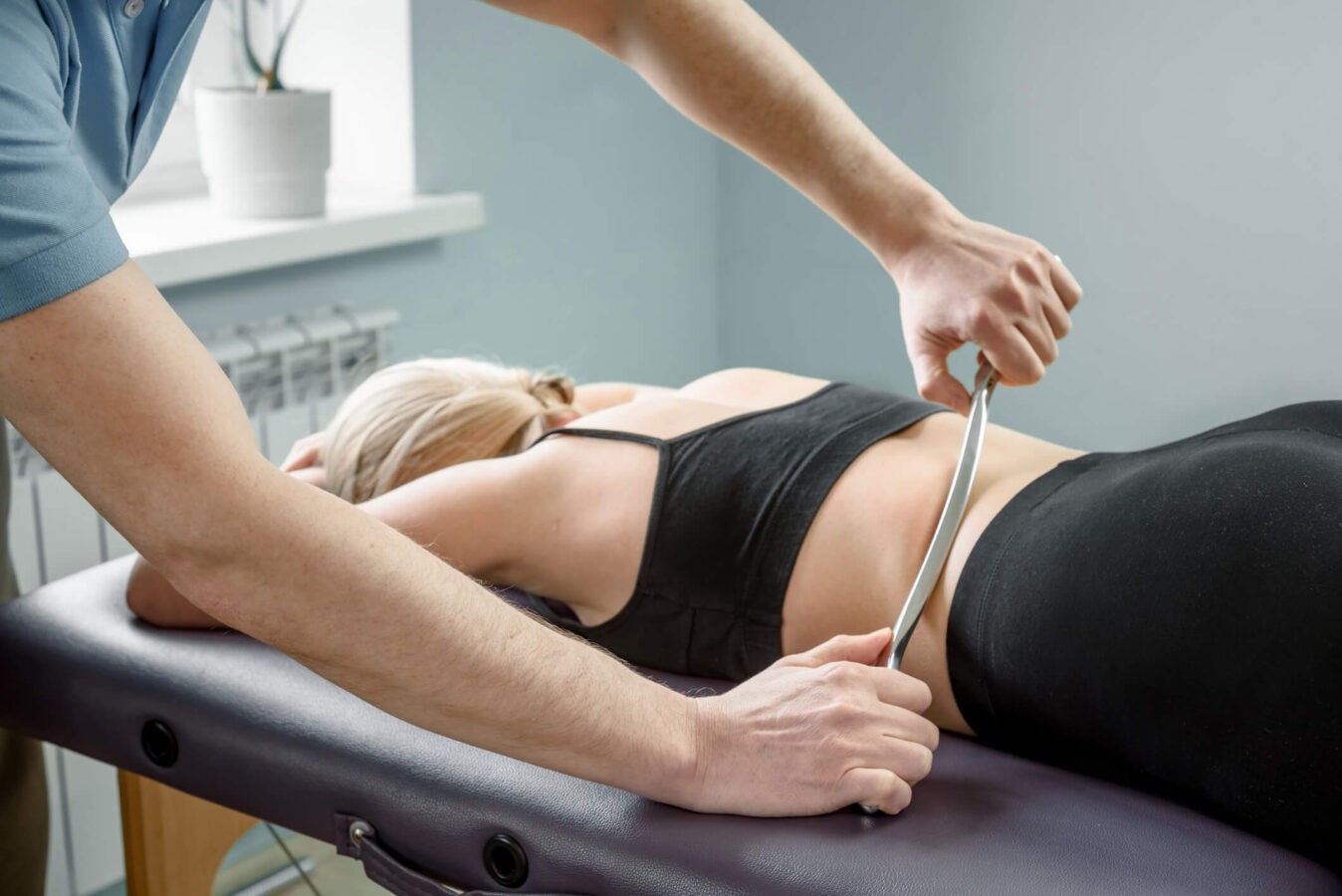
The field of physical therapy is always evolving, continually introducing new and innovative treatments to help patients move and function without pain. IASTM therapy is a technique used to improve range of motion, reduce pain, and promote recovery from sports injuries and other musculoskeletal disorders. Keep reading to find out if you might benefit from this promising physical therapy modality.
IASTM stands for: instrument-assisted soft tissue mobilization. The instrument part of the acronym refers to specialized tools of varying shapes and sizes which are applied to the body during therapy. These instruments are typically made of stainless steel and contoured specifically for the body’s curves, allowing the physical therapist to penetrate the affected tissue deeply.
Soft-tissue mobilization is a hands-on treatment commonly used in physical therapy to treat issues of the body’s muscles and connective tissues, also known as the myofascial system. Physical therapists can perform soft-tissue mobilization with their bare hands, or with a specialized tool, as we’re discussing here with IASTM.
Fascia is thin, fibrous connective tissue that supports all the structures in the human body, including bones, muscles, organs, joints, ligaments, and tendons. Imagine it as a webby network of fibrous tissue surrounding and separating the body’s systems so they’re able to work together in complete harmony.
Fascia is comprised of several layers. Between these layers is a liquid called hyaluronan that helps fascia stay flexible. Hyaluronan can dry up due to inflammation or trauma. If this happens, fascia loses its flexibility. Tight, constrictive fascia leads to pain and limited mobility.
Healthy fascia is supple and relaxed. It moves with you, gently gliding and stretching for smooth, pain-free motion. IASTM is the use of curved instruments and compressive strokes to manipulate and release myofascial restrictions.
IASTM is also used to realign painful scar tissue that replaces normal skin or other tissue after a cut, injury, surgery, or disease. Scar tissue is a collection of collagen and cells that form at the site of an injury.
While it is made of collagen just like the original tissue it’s replacing, the composition of scar tissue is slightly different. It can be more tough and dense, and less elastic than the original structures.
Scar tissue can be painful and restrict movement. IASTM pulls and stretches stubborn scar tissue, causing collagen fibers to realign in a way that improves range of motion and lowers pain.
Now let’s look at some of the many conditions and symptoms that may benefit from this technique. IASTM is used to treat:
Evidence of the use of instrument-assisted pressure to relieve damaged soft tissue dates as far back as ancient Rome and Greece, according to some research. IASTM also has its roots in the Ancient Chinese practice known as “gua sha” where a tool is gently scraped across the skin to encourage blood flow and oxygen supply to soft tissues.
Despite this long history of tool-assisted therapy, research on the scientific effects of IASTM for pain reduction, mobility improvement, and tissue recovery is still relatively limited. However, the data we do have is also incredibly promising.
A 2017 article published in the Journal of Exercise Rehabilitation summarized the results of several studies on the benefits of IASTM. According to this research, in study participants with varying musculoskeletal injuries IASTM was shown to:
Based on their research the article’s authors believe IASTM, “can speed up healing following an injury and the successful return to sports or daily activities.” A separate systematic review of available research on IASTM confirms it’s effective for increasing range of motion as well..
Now we will talk about what you can expect from IASTM therapy. We’ll assume you’ve already completed your initial physical therapy screening and physical exam, and your therapist has determined you’re a good candidate for IASTM.
IASTM therapy often begins with some form of warm-up activity like light jogging, the elliptical machine, or a stationary bike. After your warm-up, you’ll sit or lie down on the treatment table. Your physical therapist then applies lotion to the skin to allow the tools to glide smoothly across the skin.
They then use the appropriate tool to apply pressure to the affected area. The patterns, duration, and levels of pressure vary from patient to patient. IASTM is often followed by stretching and strengthening exercises to enhance results. Many patients start to feel relief after 2-3 treatments.
No. IASTM should not be painful. However, some patients do have soreness or sensitivity during IASTM, as the physical therapist applies pressure to the affected area. Always let your therapist know if you have pain during treatment. It’s also common to develop small red or purple dots after treatment, as pressure from IASTM can rupture the fine capillaries within the skin.
IASTM is generally not advised for patients with open wounds, unhealed bone fractures, acute inflammatory conditions, and some other medical concerns. A physical therapy evaluation is the best way to find out if this form of manual therapy is right for you.
Because physical therapy incorporates a wide range of modalities, you’re sure to find one that’s safe and effective based on your health needs and goals. Find a physical therapy clinic near you.
